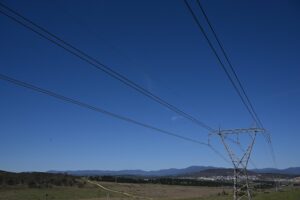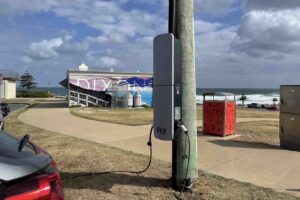Perth energy and EV data specialist Gridcog has raised £3.3 million (about $A6.4 million) to ramp up efforts in the UK and Europe, as the company also looks to launch in the US market in about 18 months.
The three-year-old business launched in 2020 and in the UK two years later, with “Sim City”-like software that replaces spreadsheets and consultants.
It allows companies to model how existing products and assets are performing, and then simulate the impact of any changes and see how they stack up under different commercial scenarios.
The new funding round was led by venture capital firm AlbionVC, which joins an investor register that includes the Clean Energy Finance Corporation (CEFC), family office Alberts Impact Ventures, and Australian VC fund AfterWork Ventures.
“We do project modelling. So if you want to do an EV charging network or a fleet electrification project or virtual power plant or utility scale solar and battery project, our software can make a kind of Sim City version,” says CEO and cofounder Fabian Le Gay Brereton.
“But now the centre of gravity is shifting to the UK.”
Although Le Gay Brereton swears the company won’t forget its roots, already almost two-thirds of the company’s business is coming from the UK and EU.
SNRG was the Perth company’s first UK customer in September 2022 to design electric housing developments, but Le Gay Brereton says about six months ago they saw an opportunity in the UK/Europe region and decided to double-down.
“There’s some really interesting similarities between the UK and Australia [such as] how do these assets behave and how do they interact with markets? That jurisdictional similarity was interesting too,” he says.
“Europe is a little bit more homogenous than the US… and more of an integrated system… so we felt like that was a good next step for us.”
Gridcog has already lined up a series of big names as clients with revenue growing by five times in the last year, the company says.
In Australia, Ampol Australia is using the software to model their EV charging network, while Shell is one of two clients in the Netherlands, which wanted to use the software to model e-mobility projects.
The Shell project in particular needed to figure out how much extra battery storage that retrofitted petrol forecourts need in order to become electric charging stations.
One challenge with forecourts is that they were not built with a big electricity grid connection in mind and fast chargers can easily exceed the normal load – and how to make money from those batteries during off-peak periods.
Gridcog was focused on pre-investment simulation and project optimisation, but last year added a tracking platform that allows owners to monitor front-of-meter, behind-the-meter, and microgrid projects in solar, wind, storage, EV charging, EV fleets, and load flexibility to see whether the promised returns are being delivered.
Beating the transmission demon
Transmission is a critical element of modelling projects, which in Australia is front of mind for large scale project developers who are likely to see their output curtailed because of limited transmission capacity, and for network companies which are trying to manage the ever rising generation from rooftop solar.
In September last year, when rooftop solar was behind the brief surge of renewables to make up 70 per cent of the grid, Gridcog said in a LinkedIn post that small scale systems were “cannibalising” prices for other renewables.
It’s a lesson the company expects to see in other markets in the coming years, as rooftop solar becomes more popular in the US in particular.
Le Gay Brereton says the complexity in distribution analysis often comes from the interaction between network pricing and distribution constraints such as dynamic operating envelopes.
Currently the solution for rooftop solar demand lies in virtual power plants and community batteries, and network managers actively either turning off rooftop systems’ access to the grid or turning down the amount they can export.
For transmission, developers and project owners are trying to maximise revenue from the connection capacity they have available.
“How do we kind of get better utilisation of the transmission capacity that’s available by co-locating resources?
“Let’s have our renewable generation or battery co-located and get more utilisation with our transmission capacity, and then it’s really about understanding how we maximise the revenue given those transmission constraints,” Le Gay Brereton says.
“Those connections are hard to get. They take a long time. And so we want to maximise the value of the capacity that we’ve got. How do we make the most of the network that is available.”








